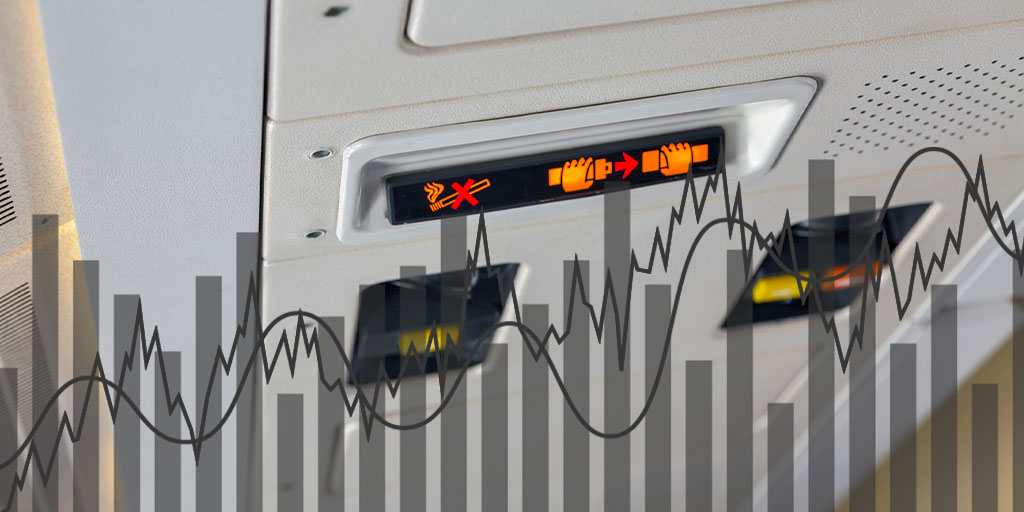The S&P closed out its worst month on the year and the worst May since 2010. For the DOW watchers, the Dow Jones Industrial Average suffered its 6th weekly loss, something that has not been done since 2011. This all came after the US Stock Market reached all-time highs in April. It is occurring as growth is slowing and trade tensions are building. We entered the Spring preparing for another correction. The bigger question for us was, why was April so strong? The Bond Market has had our attention all year, as it was sending warning signals early. The oversold situation in December was due for a bounce. It got it, and then some, with stocks soaring far higher than we expected. We knew the rally wasn’t sustainable considering the risks piling up. We just never know when. The Stock Market was ignoring the risks heading into May. It is no longer ignoring. It’s been reacting.
The DOW erased all of its gains since January. That is 4 months of gains, gone. The DOW has been a laggard most of the year, stacked full of American multinationals directly exposed to business overseas making them more susceptible to tensions on trade. The global sell-off continued into the weekend as President Trump redirected his trade ire at Mexico, by threatening a surprise tariff hike on imports if they don’t stop illegal immigration. This comes at a time when tensions have escalated significantly with China. The question is whether this makes the situation better or worse for the US. Does near-term pain lead to long-term gain? The US imported $370 Billion of goods from Mexico last year. There is no question the American Consumer will feel this.
The Stock Market has finally woken up to this risk. Fears are spiking that another increase in tariffs could tip the US, and the rest of the world, into recession. Stocks around the globe are lower. Oil is lower. Interest rates are lower as money keeps pouring into Bonds. The 10-Year Treasury yield undercut 2.15%, a level not seen in 20 months. Gold is higher, jumping back above that important $1300 level. The front end of the yield curve remains inverted. It’s most pronounced in what is referred to as the “belly of the curve,” primarily between 3 and 7-year maturities. Money has been flowing in fast. Large and seemingly smart money has been attacking the belly, and that usually only happens when trouble brews. The Fed is still behind the curve.
Last Fall, the Market was pricing in 3-4 interest rate hikes by the Fed in 2019. That has reversed completely. There is now a near 70% probability of an interest rate cut by September and 90% before year-end. The Bond Market has been forcing the Fed’s hand, telling them all year they’re too tight. It all started last Fall, and the greatest pain was felt in December, you may recall. Fed Chair Powell pivoted in January, which sent stocks soaring. But he has given no indication that a rate cut is imminent. The Bond Market is saying he has no choice. The Fed could theoretically ease a couple of times over the next year and still avoid recession with the economy stabilizing around 2% economic growth. But the Trade Wars and accelerated global economic slowdown are putting downside pressure at a time where the cycle was already naturally maturing. The tax cuts triggered an artificial boost last year. The Trade Wars are putting a similar weight on growth this year.
The Housing Market is still improving. The 3-month moving average on new home sales just hit a high for this cycle. This is one of those leading indicators which historically peaks at least 18 months before a recession. It’s similar to an inverted yield curve in that regard. The recent pick-up in new home sales implies more room for construction and housing-related spending to pick up in the second half of the year. Low interest rates are providing the support. But pricing has been unsustainably strong, particularly in California. How much longer can this last? It’s on borrowed time. The price of lumber, which we follow closely as a leading indicator of demand, has fallen 31% since its February highs, signaling that demand has slowed.
It sounds like talks between the US and China have completely stalled. At least for now. The two Presidents are still expected to meet at the G20 summit in a month. It’s not clear what would be discussed if they, in fact, have discussions at all. China is trying to position themselves as the adult in the room as it pertains to global relations. There is a big game of chicken going on and neither side wants to flinch. China doesn’t have as much leverage as the United States in the fight. But they do have some. One element brought to the forefront this week was Rare Earth. It’s a group of chemical elements that play a major role in our digital world. Rare Earth minerals are used in so many devices that we use every day. They’re in cell phones and computers as well as lighting and DVD players. China is the dominant provider of Rare Earth minerals. The US is a dominant consumer of devices that depend on Rare Earth minerals. You see why this matters.
Keep those belts buckled. We prepared for this. Our defensive positioning is providing a strong buffer from the equity declines. We expect this Market turbulence to continue into the Summer and we are focused on neutralizing the impact as much as possible. It’s a reminder of what it’s like being a long-term investor dealing with short-term pressures. It’s never fun. It’s never easy. But it comes with the territory.
Have a nice weekend. We’ll be back, dark and early on Monday.
Mike







